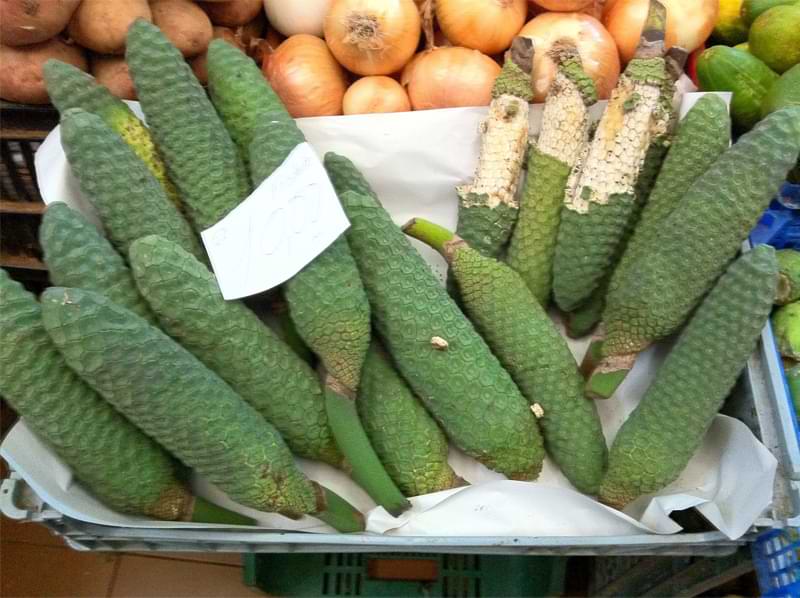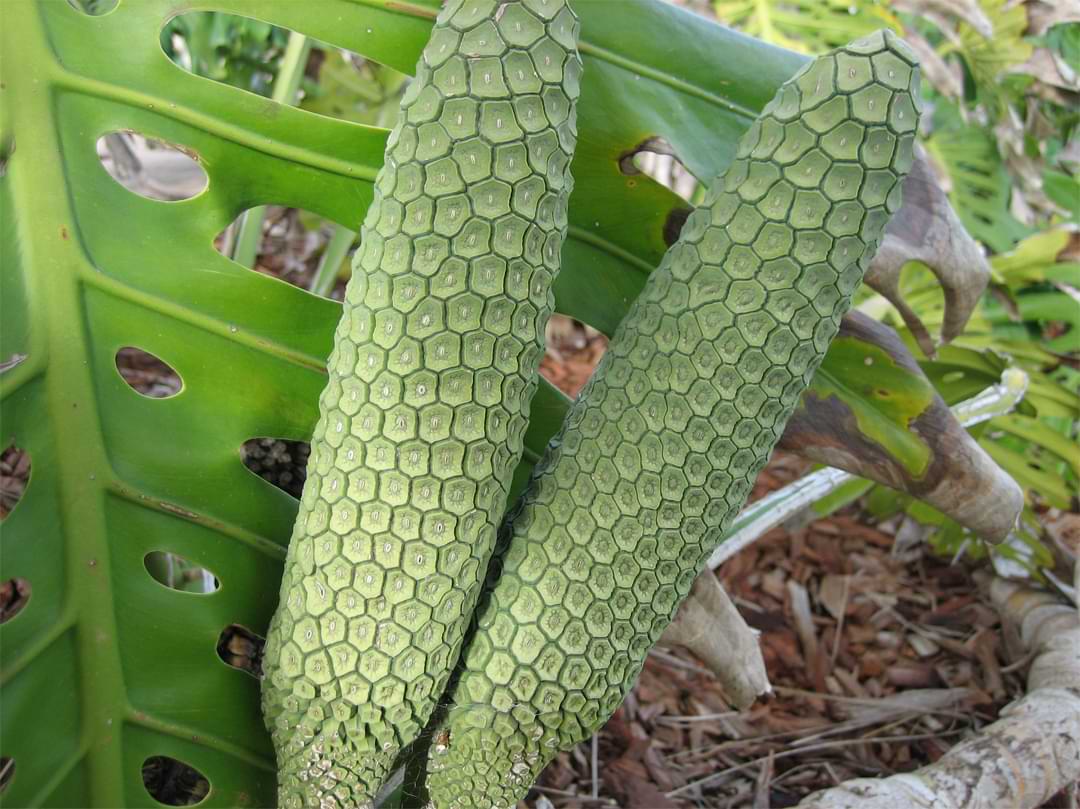Has your monstera deliciosa grown fruit? Lucky you! let’s talk about monstera fruit and how to use it.
The fruit of the monstera deliciosa plant is known as Mexican breadfruit. It has a unique flavor that’s a combination of mango, pineapple, and coconut and a texture similar to ripe banana. I’ve also heard it described as a pina colada-like flavor. It looks similar to an ear of corn with hard scales that must be removed to access the flesh of the fruit.
This is why monstera deliciosa is also sometimes called the fruit salad plant!
Around here, we love monstera deliciosa as an ornamental plant, but it is sometimes grown especially for the fruit.
Monstera deliciosa rarely fruits indoors, but it does sometimes happen if your monstera is very mature and has lots of bright sunlight. But if you live in a tropical or subtropical climate that supports outdoor monsteras, you might find yourself with a crop of monstera fruit!
So what do you do with this fruit if your monstera deliciosa decides to gift you some? Here’s how to prepare and enjoy this unusual fruit.
What to do with Monstera Fruit: AKA Mexican Breadfruit
While the Mexican breadfruit is delicious, preparing and eating it is not as simple as biting into an apple.
Underripe monstera fruit can actually irritate your mouth and stomach due to high oxalic acid content (and it also tastes horrible before it’s ripe), so it’s very important to make sure the fruit is ripe before you eat it.

Step #1: Know when to pick
The fruit takes about a year to mature on the monstera plant. When the base of the fruit turns lighter green, it’s ready to be picked.
Step #2: Let the fruit ripen
Once you pick the breadfruit, wrap it in newspaper or put it in a paper bag on the counter for 2-4 days. You can also place it upright in a glass jar covered with a paper bag. Ripe breadfruit will smell very fruity and the scales will start to separate and peel off on their own. If the scales are falling off on their own or are very easy to remove, the fruit in that area is ripe!
If you have to apply any force to remove scales, then that area is not ripe and you should wait to consume that part. Mexican breadfruit ripens from top to bottom, so the top part will be ready to eat first. You can simply cut off the unripe part and put it back in the bag or jar to continue ripening.
Step #3: Remove the fruit
Once the scales have been removed, the flesh will come off the core almost like soft corn kernels. You can remove them with a knife or even with your fingers.
You will also notice black specks in the fruit. While these are technically edible, they can cause itching in the mouth for many people. We find it’s better to be safe than sorry and use a knife to scrape these away.
Step #4: Enjoy!
Now that your fruit is ripe and prepped, you can eat it raw or use it like you would any other tropical fruit. Try it on a salad, in a smoothie, in a yogurt parfait, in a fruit salad, or even to top a cake!
Mexican breadfruit also makes delicious jam. To make jam with monstera fruit, follow a basic pectin-free fruit jam recipe (Mexican breadfruit contains enough natural pectin that you won’t need to add any). Skim off the black seeds and bits that rise to the top.
Keep in mind that the ripe fruit does still contain some oxalic acid, so don’t go too crazy or you may end up with a sore mouth (anyone who has ever overeaten pineapple knows this feeling well!). This fruit can also have a laxative effect if you eat too much at once.
This fruit requires a bit of work, but you’ll be well-rewarded with a delicious, exotic fruit you may not have thought to try otherwise!





